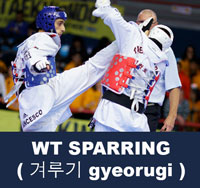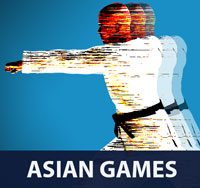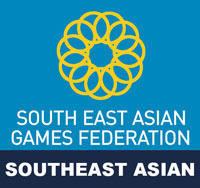- Tournaments
- World Championships
- 2013 Finals
- Female -53kg
Taekwondo 태권도Taekwondo Preschool
In some schools, permission to begin sparring is granted upon entry. The rationale for this decision is that students must learn how to deal with a fast, powerful, and determined attacker. In other schools, students may be required to wait a few months, for safety reasons, because they must first build the skills they would ideally employ in their sparring practice. View Taekwondo Sparring »




2013 World Taekwondo (WT) Championships Final | Female -53kg
As a general rule of thumb world championships will be open to elite competitors from across the world, representing their nations, and winning such an event will be considered the highest or near highest achievement in the sport
2013 World Taekwondo (WT) Championships Final | Female -53kg
City and Host Country: Puebla, Mexico 
| NAME | KIM Yu-Jin | Ana ZANINOVIC |
| COUNTRY | REPUBLIC OF KOREA | CROATIA |
| FLAG |  |
 |
Advertisement

Did you know?
Southeast Asian Games Championships
The Southeast Asian Games (also known as the SEA Games), is a biennial multi-sport event involving participants from the current 11 countries of Southeast Asia. The games is under regulation of the Southeast Asian Games Federation with supervision by the International Olympic Committee (IOC) and the Olympic Council of Asia. For more information View Southeast Asian Games Championships »
| Year | Date | Flag | City and Host Country | Place |
| 2019 | November 30 - December 10 |  |
Various | Philippines |
| 2017 | August 19 - August 30 |  |
Kuala Lumpur | Malaysia |
| 2015 | June 5 - June 16 |  |
Singapore | Singapore |
| 2013 | December 11 - December 22 |  |
Naypyidaw | Myanmar |
| 2011 | November 11 - November 22 |  |
Palembang and Jakarta | Indonesia |
| 2009 | December 9 - December 18 |  |
Vientiane | Laos |
| 2007 | December 6 - December 15 |  |
Nakhon Ratchasima | Thailand |
| 2005 | November 27 - December 5 |  |
Manila | Philippines |
| 2003 | December 5 - December 13 |  |
Hanoi | Vietnam |
RESOURCES
This article uses material from the Wikipedia article "Southeast Asian Games" which is released under the Creative Commons Attribution-Share-Alike License 3.0.
Advertisement

Quiz
Question. In what year was Kukkiwon ( 국기원 ) being officially named on?
Kukkiwon ( 국기원 ), also known as World Taekwondo Headquarters, and home of the World Taekwondo Academy, is the official taekwondo governing organization established by the South Korean government. It is supervised by the International Sports Division of the Ministry of Culture, Sports, and Tourism. Kukkiwon is based at 635 Yeoksam-dong ( 역삼동 ) in the Gangnam-gu ( 강남구 ) district of Seoul, South Korea.
Question. In what year was Kukkiwon ( 국기원 ) being officially named on?
Answer you gave was: 1971
Your answer is wrong! You need to study more!

The organization being officially named on 6 February 1973. Known as World Taekwondo Headquarters, is the official taekwondo governing organization established by the South Korean government. Although the terms "WT" and "Kukkiwon" are often mistakenly used interchangeably, the Kukkiwon is a completely different organization which trains and certifies instructors and issues official dan and poom certificates worldwide.
View Kukkiwon ( 국기원 ) » 
Question. In what year was Kukkiwon ( 국기원 ) being officially named on?
Answer you gave was: 1973
Your answer is correct! Great Job!

The organization being officially named on 6 February 1973. Known as World Taekwondo Headquarters, is the official taekwondo governing organization established by the South Korean government. Although the terms "WT" and "Kukkiwon" are often mistakenly used interchangeably, the Kukkiwon is a completely different organization which trains and certifies instructors and issues official dan and poom certificates worldwide.
View Kukkiwon ( 국기원 ) » 
Question. In what year was Kukkiwon ( 국기원 ) being officially named on?
Answer you gave was: 1975
Your answer is wrong! You need to study more!

The organization being officially named on 6 February 1973. Known as World Taekwondo Headquarters, is the official taekwondo governing organization established by the South Korean government. Although the terms "WT" and "Kukkiwon" are often mistakenly used interchangeably, the Kukkiwon is a completely different organization which trains and certifies instructors and issues official dan and poom certificates worldwide.
View Kukkiwon ( 국기원 ) » 
Question. In what year was Kukkiwon ( 국기원 ) being officially named on?
Answer you gave was: 1977
Your answer is wrong! You need to study more!

The organization being officially named on 6 February 1973. Known as World Taekwondo Headquarters, is the official taekwondo governing organization established by the South Korean government. Although the terms "WT" and "Kukkiwon" are often mistakenly used interchangeably, the Kukkiwon is a completely different organization which trains and certifies instructors and issues official dan and poom certificates worldwide.
View Kukkiwon ( 국기원 ) » 
Question. What is the name of Taegeuk #5 in Korean?
Taegeuk 태극 (in World Taekwondo (WT)) refers to a set of poomse 품새 used to create a foundation for the teaching of taekwondo. A poomse or form is a detailed pattern of defense-and-attack motions and techniques used in traditional martial arts. Each taegeuk form symbolizes a specific state thought to be indicative of the belt the student currently holds, and is represented in World Taekwondo (WT) by trigrams similar to those found in the four corners of the South Korean flag.
Question. What is the name of Taegeuk #5 in Korean?
Answer you gave was: Sam Jang
Your answer is wrong! You need to study more!


This trigram represents Fire. Related to this symbol is also East and the relationship of the Second Daughter. Fire contains a lot of energy. The symbol behind the fire is similar to the symbolism of the water in that both can aid and both can destroy. This form is intended to be performed rhythmically, with some outbursts of energy to reflect fire's rhythmic and energetic dualism.
Question. What is the name of Taegeuk #5 in Korean?
Answer you gave was: Yi Jang
Your answer is wrong! You need to study more!


The associated trigram of this poomse represents the Lake. Also, related to the symbol is South East and the relationship of the youngest daughter. The movements of this Taegeuk are aimed to be performed believing that man has limitations, but that we can overcome these limitations. The Lake and its water symbolize the flowing and calm nature of the martial artist.
Question. What is the name of Taegeuk #5 in Korean?
Answer you gave was: Yuk Jang
Your answer is wrong! You need to study more!


The trigram associated with this poomse represents Water. Also, there is a relation to West and the relationship with a Second son. The movements of this poomse are intended to be performed like water; flowing, powerful and cleansing. Sometimes standing still like water in a lake, sometimes thriving as a river, sometimes powerful like a waterfall.
Question. What is the name of Taegeuk #5 in Korean?
Answer you gave was: O Jang
Your answer is correct! Great Job!


The trigram associated with this poomse represents Wind. The trigram is also related to southwest and the relationship with an eldest daughter. The I Ching promotes that wind is a gentle force, but can sometimes be furious, destroying everything in its path. As such, it is intended that this poomse is performed like the wind: gently, but knowing the ability of mass destruction with a single movement.
Question. What is the korean terminology for Kicking?
A kick is a physical strike using the foot, leg, or knee. As the human leg is longer and stronger than the arm, kicks are generally used to keep an opponent at a distance, surprise him or her with their range, and inflict substantial damage. All kicks can be executed as jump kicks, spin kicks, jump spin kicks or multi-rotational spin kicks. Also, all can be performed by the front or rear leg in a given stance.
Question. What is the korean terminology for kicking?
Answer you gave was: ( 차기 chagi )
Your answer is correct! Great Job!


Kicking ( 차기 chagi ) is a physical strike using the foot ( 발 bal ), leg, or knee ( 무릎 mureup ). As the human leg is longer and stronger than the arm ( 팔 pal ), kicks ( 차기 chagi ) are generally used to keep an opponent at a distance, surprise him or her with their range, and inflict substantial damage. Any attempt to deliver a kick ( 차기 chagi ) will necessarily compromise one's stability of stance ( 서기 sogi ).
Question. What is the korean terminology for kicking?
Answer you gave was: ( 서기 sogi )
Your answer is wrong! You need to study more!


The Korean martial arts has several Stances ( 서기 sogi ) used for different activities. Although there are strong similarities in stances throughout taekwondo schools, individual instructors often have their own preferred style. These stances are most commonly seen in taekwondo forms, and are critical for balance, precision, and good technique in the martial art.
Question. What is the korean terminology for kicking?
Answer you gave was: ( 막기 makgi )
Your answer is wrong! You need to study more!


In martial arts, blocking ( 막기 makgi ) is the act of stopping or deflecting an opponent's attack for the purpose of preventing injurious contact with the body. A block ( 막기 makgi ) usually consists of placing a limb across the line of the attack. Blocks ( 막기 makgi ) are considered by some to be the most direct and least subtle of defensive techniques.
Question. What is the korean terminology for kicking?
Answer you gave was: ( 치기 chigi )
Your answer is wrong! You need to study more!


Taekwondo Strikes ( 치기 chigi ) are performed as a close distance alternative to kicks. Hand strikes make up fast combinations of strikes which can leave an opponent stunned and unable to defend himself. Striking ( 치기 chigi ) are taekwondo techniques striking with the twisting force of the body excluding techniques using the fist ( 주먹 jumeok ) or fingertips ( 손끝 sonkkeut ).



World Taekwondo (WT) Tournament Sparring ( 겨루기 gyeorugi )
Under World Taekwondo (WT) and Olympic rules, sparring is a full-contact event and takes place between two competitors in an area measuring 8 meters square. A win can occur by points, or if one competitor is unable to continue (knockout) the other competitor wins. Each match consists of three semi-continuous rounds of contact, with one minute's rest between rounds. For more information View World Taekwondo (WT) Tournament Sparring ( 겨루기 gyeorugi ) » 
Risk of injury can be reduced by completing an effective warm up consisting of a heart raiser to get your pulse up, followed by sport specific dynamic stretches (stretches whilst moving). Please follow the guidance of a certified Master Instructor or trainer when doing sports related activities. Depending on the intensity of the exercise, cooling down can involve a slow jog or walk, or with lower intensities, stretching can be used. Cooling down allows the heart rate to return to its resting rate. View more information on Warming Up and Cooling Down ».
This article uses material from the Wikipedia articles "Warming Up" and "Cooling Down", which is released under the Creative Commons Attribution-Share-Alike License 3.0.
RESOURCES
This article uses material from the Wikipedia articles "World Taekwondo Championships" and "World Championship" which is released under the Creative Commons Attribution-Share-Alike License 3.0.



















